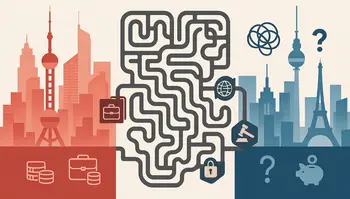
Navigating China’s education system can be a daunting task for students and parents alike. With its vast size, diverse culture, and intricate bureaucratic processes, gaining a clear understanding of how to navigate this system is crucial for success.

Key Components
1. Primary Education
In China, primary education typically begins at age six and lasts for six years. The curriculum focuses on fundamental subjects such as Chinese, mathematics, and science. Students also engage in extracurricular activities and character development programs.
2. Secondary Education
Secondary education is divided into junior and senior levels, spanning three years each. The curriculum becomes more specialized, with an emphasis on preparing students for the rigorous college entrance examination, known as the Gaokao.
3. Higher Education
China boasts a wide range of higher education institutions, including prestigious universities and vocational colleges. Admission to top-tier universities is highly competitive, with the Gaokao serving as the primary determinant for entrance.
Challenges and Opportunities
1. Cultural Differences
For international students and parents, navigating China’s education system can pose unique challenges due to cultural differences. Understanding Chinese customs, language nuances, and academic expectations is essential for a smooth transition.
2. Language Barrier
Mandarin Chinese is the primary language of instruction in Chinese schools and universities. Non-native speakers may encounter difficulties adjusting to the language barrier, but many institutions offer language support programs to facilitate learning.
3. Gaokao Preparation
The Gaokao is a high-stakes examination that determines a student’s future academic prospects. Preparation often begins years in advance, with students undertaking rigorous study schedules and attending specialized coaching classes.
Tips for Success
1. Research Thoroughly
Before embarking on the journey of navigating China’s education system, conduct thorough research to understand the different options available, admission requirements, and cultural expectations.
2. Seek Guidance
Consulting with education experts, counselors, or alumni who have successfully navigated the system can provide valuable insights and guidance.
3. Embrace Cultural Immersion
Immersing oneself in Chinese culture through language classes, cultural exchange programs, and extracurricular activities can enhance the overall educational experience and facilitate integration.
4. Stay Informed
Stay updated on changes and developments within the Chinese education system, as policies and procedures may evolve over time.
Conclusion
While navigating China’s education system may present challenges, it also offers abundant opportunities for personal and academic growth.
By understanding the landscape, overcoming obstacles, and embracing cultural immersion, students and parents can navigate this complex system with confidence and success.


